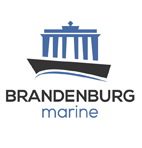Loss Prevention Advice
- Details
- News /
A successful plan for locating and retrieving a missing crew member(s) in the engine room during a fire requires that the crew practice their responses regularly before ever having to implement them in an emergency. Make a Good Catch by developing a search and rescue plan and having the crew practice those procedures during drills. In this context, your managers are pleased to present the latest animation instalment of the Club’s Good Catch initiative:
- Details
- News /
Below you will find ARC’s weekly report dated 30 October 2024, covering the period of 24 to 30 October 2024, where the following incidents were reported:
- 0 maritime security incidents in West Africa in the last 7 days
- 1 maritime security incident in the Indian Ocean/Middle East in the last 7 days.
Full advisory at the following link.
https://britanniapandi.com/wp-content/uploads/2024/10/ARC-Weekly-Report-30.10.24.pdf
- Details
- News /
An alert on 29 October regarding the prevention of claims during transit in the Suez Canal.
Where vessels are about to transit the Suez Canal, Underwriters recommends that Shipowners make their Masters aware of the following requirements/best practices to mitigate exposure to potential claims:
- Details
- News /
A significant number of heavy weather-related incidents off the South African coast with the number of incidents recorded in the region to have reached the same level as the combined total from 2021 to 2023 within the first nine months of this year.



